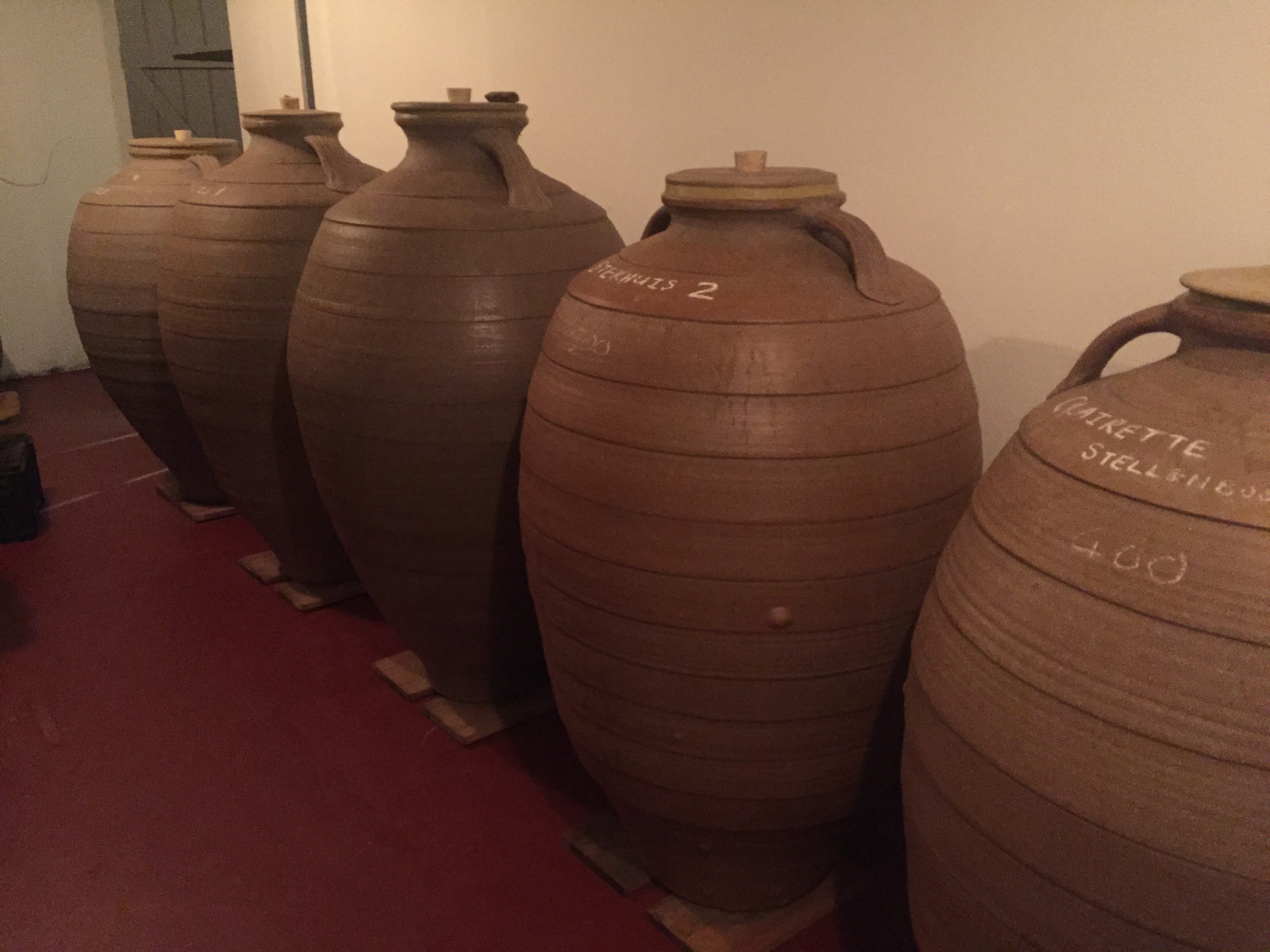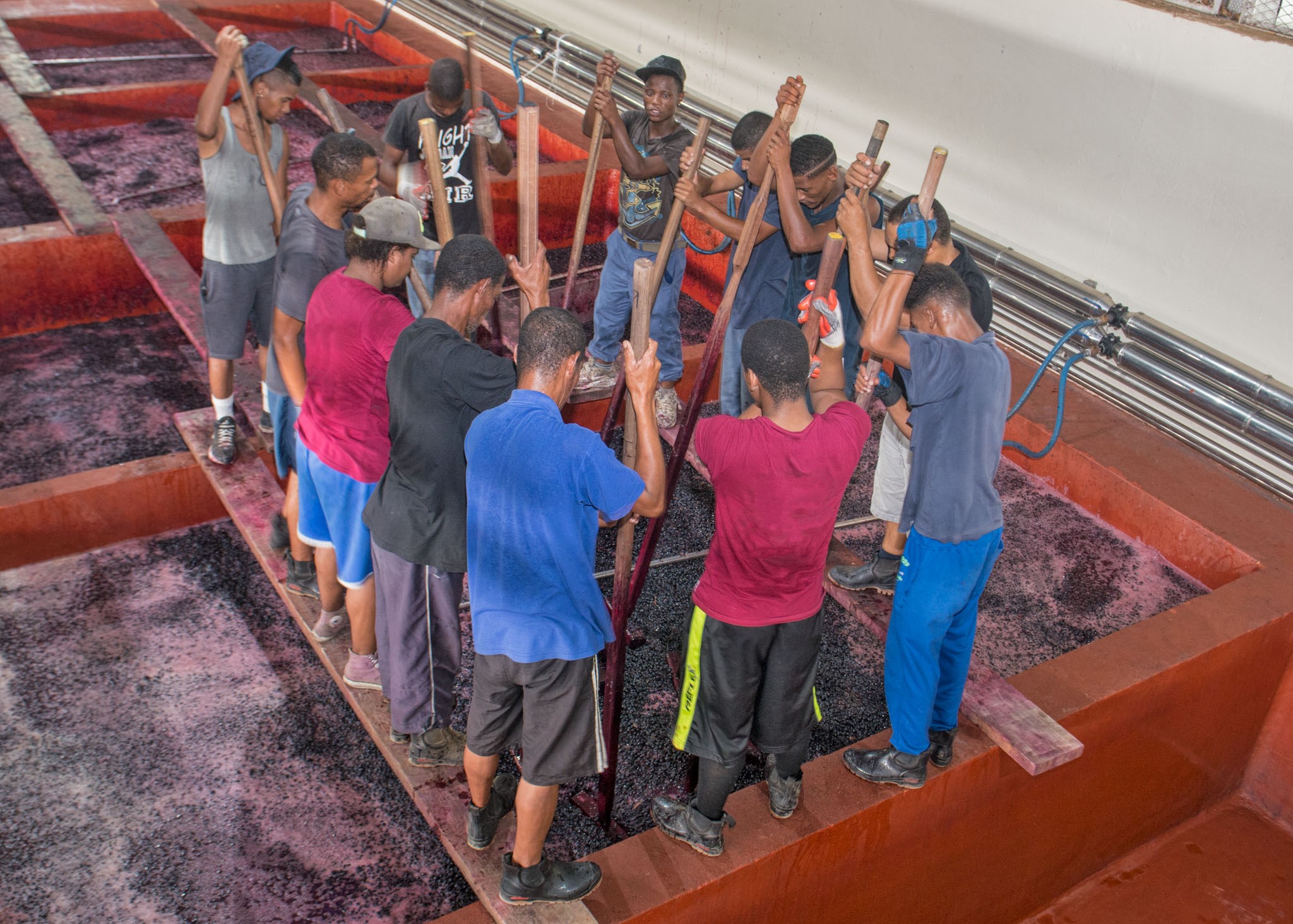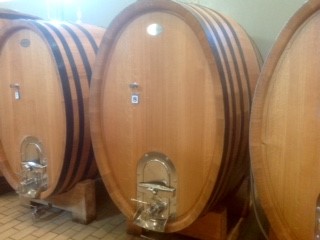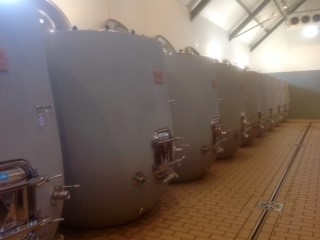
VESSELS OF FERMENTATION AND AGEING
Way back when, cellars would be lined with forbidding rows of tall cement tanks, a walkway with drainage breaking the line; nothing much to inspire thoughts of great wine.
With the 1950s, cold-fermentation and stainless steel tanks made an appearance; these proved the answer to the previously oxidised whites, where temperature control was a problem.

Red wines, needing extraction of colour and tannin, were still fermented in those cement tanks. Famously, though of a low, wide dimension permitting visitors to view the red wine action inside, they are still used at Kanonkop Estate. Winemaker, Abrie Beeslaar explains: ‘Our fermenters are 5 x 2.5 x 1.2 metres deep. The benefits include the oxygen introduced during fermentation; the large surface area allows a good extraction even when not punching down the cap (the thin layer of skins and pips) through the juice, then homogenising the temperature throughout the kuipe (vat) by doing a punch down every two hours.’ There are challenges Beeslaar admits, such as large amount of labour involved and emptying the kuipe.

Wooden barrels for ageing red wine would also have been housed in those old cellars; not the now familiar 225 litre Bordeaux barriques, but huge ones, holding several thousand litres. Barriques were introduced at the end of the 1970s, new ones especially holding fashionable sway for 25-30 years, until the ‘young guns’ questioned their dominant flavour impact. Chris Alheit, of Alheit Vineyards, admits new oak is a personal decision: ‘We are trying to express site and vintage, so new oak is totally out; we need vessels as flavour neutral as possible so as not to mask these.’
Conversely, all Kanonkop’s red wines are matured in barriques, from new to 10 years old. ‘The wine has to be able to handle new oak; after the fifth fill, the barrel imparts little character but the wine still evolves,’ Beeslaar clarifies. Alheit, who spontaneously barrel-ferments his whites in barrels aged between four and 17 years, adds; ‘The older the barrel, the less it seems to breathe.’ Today, the barrique has been joined by larger formats – 228, 300, 500, 600 litres and oval-shaped foudres from 1000 litres – providing different levels of evolution and oak uptake in the wine.

Cement has made a return – in the shape of an egg; they are probably the most popular new vessel at present. Chris Alheit’s view: ‘I was sceptical at first but now I think they are fantastic. Because of the huge thermal mass (1900kg of cement), the ferments stay warm for longer than in a small barrel, so always go bone dry. Their shape makes a difference; with a significant change in temperature, the wine turns over the lees by itself, building texture and depth. As they don’t breathe, the wine can be left a year without sulphur.’

Could the next big thing be clay pots? Alheit is experimenting with some made from local clay. He describes them as, ‘Flavour neutral, breathe but very slowly and we notice wine needs longer in bottle to open up,’ claiming to like them very much, though unsure of the influence of their shape.
Cellars, like today’s wines, have become a whole lot more interesting.
-Angela Lloyd